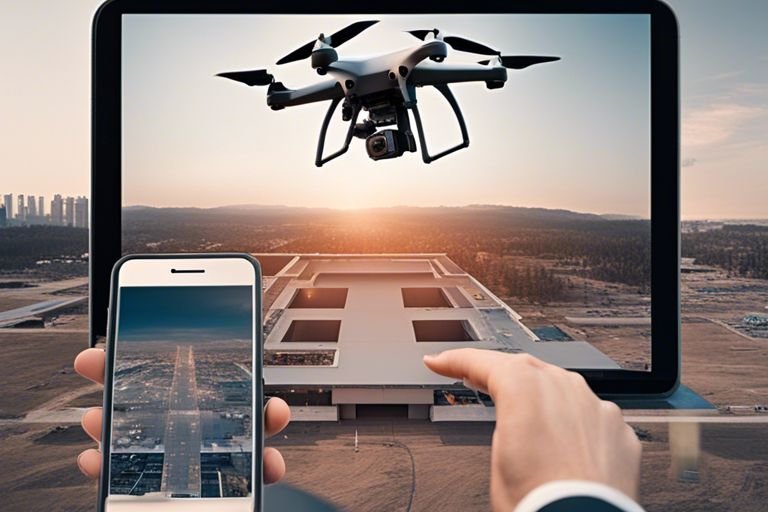Can AI help to improve accessibility and inclusion for individuals with disabilities?

Embracing innovative solutions in the field of technology can dramatically transform the way individuals with disabilities navigate the world around them. As a result, you may be wondering how Artificial Intelligence (AI) can impact accessibility and inclusion for those with disabilities. The integration of AI has the potential to significantly improve the lives of people with disabilities by providing them with tools and resources to enhance their independence and participation in society. Whether it’s through the development of AI-powered assistive devices or the creation of accessibility features in digital platforms, AI has the capability to positively impact the lives of individuals with disabilities in various aspects of their daily lives. In this blog post, we will explore the ways in which AI can contribute to improving accessibility and inclusion for individuals with disabilities, and the potential benefits and challenges associated with this technological advancement.
Key Takeaways:
- AI Technology Can Enhance Accessibility: AI has the potential to improve the lives of individuals with disabilities by providing innovative solutions that make digital content, physical spaces, and communication more accessible.
- AI Can Support Inclusive Design: By leveraging AI, businesses and organizations can create products and services that consider the diverse needs of individuals with disabilities, leading to a more inclusive and accommodating environment for all.
- Collaboration and Feedback are Essential: To maximize the benefits of AI in accessibility, it is crucial for stakeholders to collaborate with individuals with disabilities to gather feedback, prioritize needs, and ensure that AI solutions truly address the challenges faced by the community.

AI Technologies Enhancing Accessibility
Now let’s explore how AI technologies are enhancing accessibility for individuals with disabilities. The integration of AI in assistive technologies has paved the way for significant advancements in improving accessibility and inclusion.
Speech Recognition and Assistive Communication
Speech recognition technology has significantly improved accessibility for individuals with disabilities, particularly those with motor difficulties or speech impairments. With the help of AI, you can use speech-to-text applications to convert spoken words into written text, allowing you to communicate more effectively. Additionally, AI-powered assistive communication devices can interpret and translate your speech in real-time, enabling seamless communication across different languages. This technology has opened up new possibilities for individuals with disabilities, empowering you to express yourself and engage with others more confidently.
Visual Assistance and Recognition Systems
AI-powered visual assistance and recognition systems have revolutionized accessibility for individuals with visual impairments. Through the use of advanced image recognition algorithms, these systems can describe the visual world to you in real-time, providing valuable information about your surroundings. From reading text on signs to identifying objects and people, these AI technologies can enhance your independence and enable you to navigate the world more effectively. Additionally, AI-powered apps and devices can provide auditory or tactile feedback to assist you in interpreting visual information, further enhancing your ability to interact with your environment.
Advancements in Mobility and Independence
While accessibility and inclusion for individuals with disabilities have been greatly improved with the help of AI, advancements in mobility and independence have been particularly remarkable. These developments have revolutionized the way people with disabilities navigate the world, promoting autonomy and freedom.
Smart Mobility Devices
Smart mobility devices have been instrumental in enhancing the independence of individuals with disabilities. These devices, such as smart wheelchairs and mobility scooters, are equipped with AI technology that allows for enhanced navigation and obstacle avoidance. They can also be controlled through voice commands or intuitive interfaces, making them more accessible for individuals with limited mobility. With the help of AI, these devices can adapt to your preferences and learn from your movements, making navigation smoother and more efficient. The integration of AI in mobility devices has significantly improved the quality of life for many individuals with disabilities, granting them greater freedom to move around and engage in activities.
Environmental Control and Navigation Aids
AI-powered environmental control and navigation aids have been pivotal in empowering individuals with disabilities to independently navigate their surroundings. These devices can assist you in controlling various aspects of your environment, such as adjusting lighting, temperature, and electronic devices, using voice commands or specialized interfaces. They also provide real-time navigation support, helping you find your way in unfamiliar environments and alerting you to potential obstacles. These aids utilize AI to understand your specific needs and preferences, providing personalized assistance that promotes greater autonomy and safety.
AI in Adaptive Education and Employment
Your world is constantly evolving, and as we move forward, technology plays an increasingly crucial role in shaping our daily lives. When it comes to accessibility and inclusion for individuals with disabilities, artificial intelligence (AI) has the potential to revolutionize the way they access education and employment opportunities.
Customized Learning Experiences
AI has the capability to create customized learning experiences for individuals with disabilities. Through the use of AI-powered educational tools, the learning process can be tailored to meet the specific needs and abilities of each student. Whether it’s providing alternative formats for content, personalized study schedules, or real-time feedback, AI can empower individuals with disabilities to learn in a way that works best for them.
Workplace Accommodations and Tools
AI is also making significant strides in the workplace by providing accommodations and tools to improve accessibility and inclusion for individuals with disabilities. From speech-to-text technologies to smart office layouts, AI can help create a more inclusive work environment by eliminating barriers for individuals with disabilities. Additionally, AI-powered job-matching platforms can help individuals with disabilities find employment opportunities that are well-suited to their unique abilities and needs.
By leveraging AI in adaptive education and employment, you can experience a more inclusive and accommodating environment that allows you to reach your full potential. With advancements in AI, the possibilities for creating a more accessible and inclusive world for individuals with disabilities are increasingly within reach.
Ethical Considerations and Future Directions
To ensure the effective use of AI in improving accessibility and inclusion for individuals with disabilities, it is crucial to consider the ethical implications of these advancements. As AI technology continues to advance, it is important to consider the potential impact on privacy, inclusivity, and ethical AI development. This chapter will discuss the ethical considerations and future directions of using AI to enhance accessibility and inclusion for individuals with disabilities.
Balancing Innovation with Privacy
As AI technology becomes more integrated into everyday life, it is essential to balance innovation with privacy considerations. While AI has the potential to improve accessibility and inclusion for individuals with disabilities, it also raises concerns about the privacy and security of personal data. It is important to establish clear guidelines and regulations to protect the privacy of individuals with disabilities while also allowing for the innovation and advancement of AI technology. Additionally, organizations developing AI solutions should prioritize the ethical collection and use of data to mitigate potential privacy risks.
Fostering Inclusive AI Development
When incorporating AI to improve accessibility and inclusion for individuals with disabilities, it is crucial to foster inclusive AI development practices. By including individuals with disabilities in the design and development process, you can ensure that AI solutions are truly inclusive and address the specific needs of this community. This approach can lead to the creation of more effective and impactful AI technologies that cater to the diverse needs of individuals with disabilities. Additionally, promoting diversity and inclusivity within AI development teams can lead to a more comprehensive understanding of the challenges and opportunities related to accessibility and inclusion.
Can AI help to improve accessibility and inclusion for individuals with disabilities?
Upon reflecting on the potential of AI to improve accessibility and inclusion for individuals with disabilities, it becomes evident that the technology has the power to greatly impact the lives of many. From speech recognition software to smart home devices and advanced prosthetics, AI has the ability to enhance the independence and quality of life for those with disabilities. By allowing for more efficient communication, increased mobility, and greater access to information, AI can play a pivotal role in breaking down barriers and creating a more inclusive society for everyone. It is important to continue exploring and developing AI applications that prioritize the needs and capabilities of individuals with disabilities, as they can lead to groundbreaking advancements in the field of accessibility and inclusion.



